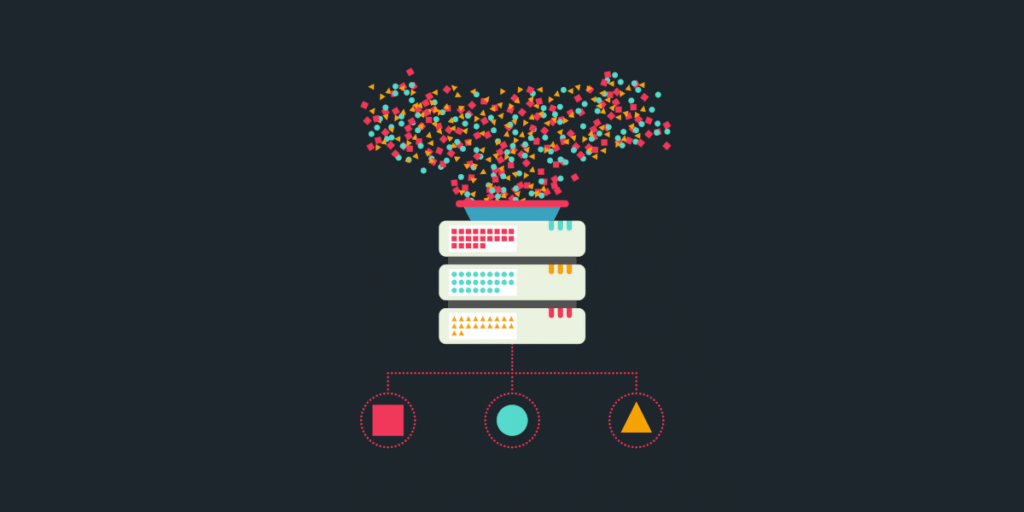The Naive Bayes classifier is a classification technique based on Bayes' theorem, with the naïve assumption of independence among predictors. Despite its simplicity, the Naive Bayes classifier has demonstrated its effectiveness in various application areas, including spam filtering, sentiment analysis, and document classification.
What Is the Theory Behind the Naive Bayes Classifier?
The Naive Bayes classifier leverages Bayes’ theorem, which describes the probability of an event based on prior knowledge of conditions that may be related to the event. The formula for Bayes’ theorem is:
P(A|B) = P(B|A) * P(A) / P(B)
where:
- P(A|B) is the probability of event A given that event B is true.
- P(B|A) is the probability of event B given that event A is true.
- P(A) and P(B) are the independent probabilities of events A and B, respectively.
In classification contexts, A represents a specific class, and B represents a set of features (or attributes). The Naive Bayes classifier calculates the probability that an example belongs to a given class, assuming that all features are independent of each other.

What Are the Types of Naive Bayes Classifiers?
Gaussian Naive Bayes Classifier
The Gaussian Naive Bayes classifier is used when the attributes are continuous and follow a normal distribution. This type of classifier is particularly useful when dealing with continuous variables that can be modeled by a Gaussian distribution. The underlying assumption is that the data for each class follow a normal (or Gaussian) distribution.
Formally, if we have a continuous variable x and a class c, then the conditional probability P(x|c) is given by the probability density function of the normal distribution:
P(x|c) = (1 / √(2πσ²_c)) * exp(- (x – μ_c)² / (2σ²_c))
where μ_c is the mean of the values for class c, and σ²_c is the variance of the values for class c. The Gaussian Naive Bayes classifier is often used in applications such as pattern recognition and image classification.
Example
Suppose we have two classes c1 and c2 with the following parameters:
- For c1: μ_c1 = 5 and σ²_c1 = 1
- For c2: μ_c2 = 10 and σ²_c2 = 2
If we want to classify a new observation x = 6, we calculate P(x|c1) and P(x|c2) and compare these values.
Multinomial Naive Bayes Classifier
The Multinomial Naive Bayes classifier is often used for document classification when the data consists of word frequencies. This model is well-suited for discrete data, such as word counts or events. It assumes that the features follow a multinomial distribution, which is suitable for text classification tasks where the features are word occurrences.
Formally, the conditional probability P(x|c) for a feature x and a class c is given by:
P(x|c) = (n_x,c + α) / (N_c + αN)
where n_x,c is the number of times word x appears in documents of class c, N_c is the total number of words in documents of class c, α is a Laplace smoothing parameter, and N is the total number of distinct words. Laplace smoothing is used to handle the issue of zero probabilities for words that do not appear in the training documents.
Example
Suppose we have two classes, ‘sport’ and ‘politics’, and we want to classify the word ‘match’. We have the following counts:
- ‘match’ appears 50 times in sport documents and 5 times in politics documents.
- The total number of words in the sport class is 1000 and in the politics class is 800.
With a Laplace smoothing α = 1, we calculate:
- P(‘match’|’sport’) = (50 + 1) / (1000 + 1 * 1000)
- P(‘match’|’politics’) = (5 + 1) / (800 + 1 * 1000)
We use these probabilities to classify a new document containing the word ‘match’.

Bernoulli Naive Bayes Classifier
The Bernoulli Naive Bayes classifier is suitable for binary variables (presence or absence of a feature). This model is primarily used for text classification tasks where features are binary indicators (0 or 1) representing the presence or absence of a particular word.
In this model, the conditional probability P(x|c) is calculated based on the presence or absence of the feature:
P(x_i = 1 | c) = (n_i,c + α) / (N_c + 2α)
P(x_i = 0 | c) = 1 – P(x_i = 1 | c)
where n_i,c is the number of documents in class c in which feature x_i is present, and N_c is the total number of documents in class c. The smoothing parameter α is used to avoid zero probabilities.
Example
Suppose we have two classes, ‘spam’ and ‘non-spam’, and we want to classify the occurrence of the word ‘free’.
- ‘free’ appears in 70 out of 100 spam documents and in 20 out of 100 non-spam documents.
With a Laplace smoothing α = 1, we calculate:
- P(‘free’ = 1|’spam’) = (70 + 1) / (100 + 2 * 1)
- P(‘free’ = 0|’spam’) = 1 – P(‘free’ = 1|’spam’)
- P(‘free’ = 1|’non-spam’) = (20 + 1) / (100 + 2 * 1)
- P(‘free’ = 0|’non-spam’) = 1 – P(‘free’ = 1|’non-spam’)
We use these probabilities to classify a new document based on the presence or absence of the word ‘free’.
What Are the Practical Applications?
The Naive Bayes classifier is used in numerous domains, including:
- Spam Filtering: Identifying unwanted emails. By using features of the email, such as the frequency of certain words, the Naive Bayes classifier can determine the probability that an email is spam or not.
- Sentiment Analysis: Determining the sentiment expressed in a text. The classifier can be used to assess whether the sentiments expressed in product reviews, social media comments, or other texts are positive, negative, or neutral.
- Document Classification: Automatically categorizing texts based on their content. For example, in content management systems, articles can be automatically classified into categories such as sports, politics, technology, etc.

What Are the Advantages and Disadvantages?
Advantages
- Simplicity: Easy to understand and implement. The Naive Bayes classifier is simple to code and does not require many tuning parameters.
- Speed: Computationally efficient, even with large datasets. Due to its simplicity, the Naive Bayes classifier is extremely fast to train and predict.
- Performance: Can be highly effective, especially with textual data. Despite its simplistic assumptions, it often provides competitive results compared to more complex models, particularly in text classification tasks.
Disadvantages
- Independence Assumption: The independence assumption among predictors is often unrealistic. In many practical cases, the features are not actually independent, which can lead to suboptimal predictions.
- Variable Performance: Can be outperformed by more sophisticated classification methods when the data does not meet the basic assumptions. In contexts where the relationships between features are complex, more advanced models like support vector machines or neural networks can offer better performance.
Conclusion
The Naive Bayes classifier remains a valuable tool in machine learning due to its simplicity and effectiveness. Although it relies on simplified assumptions, it offers remarkable performance for a wide range of applications. Whether for spam filtering, sentiment analysis, or document classification, Naive Bayes is often an effective first approach to consider for supervised classification.










